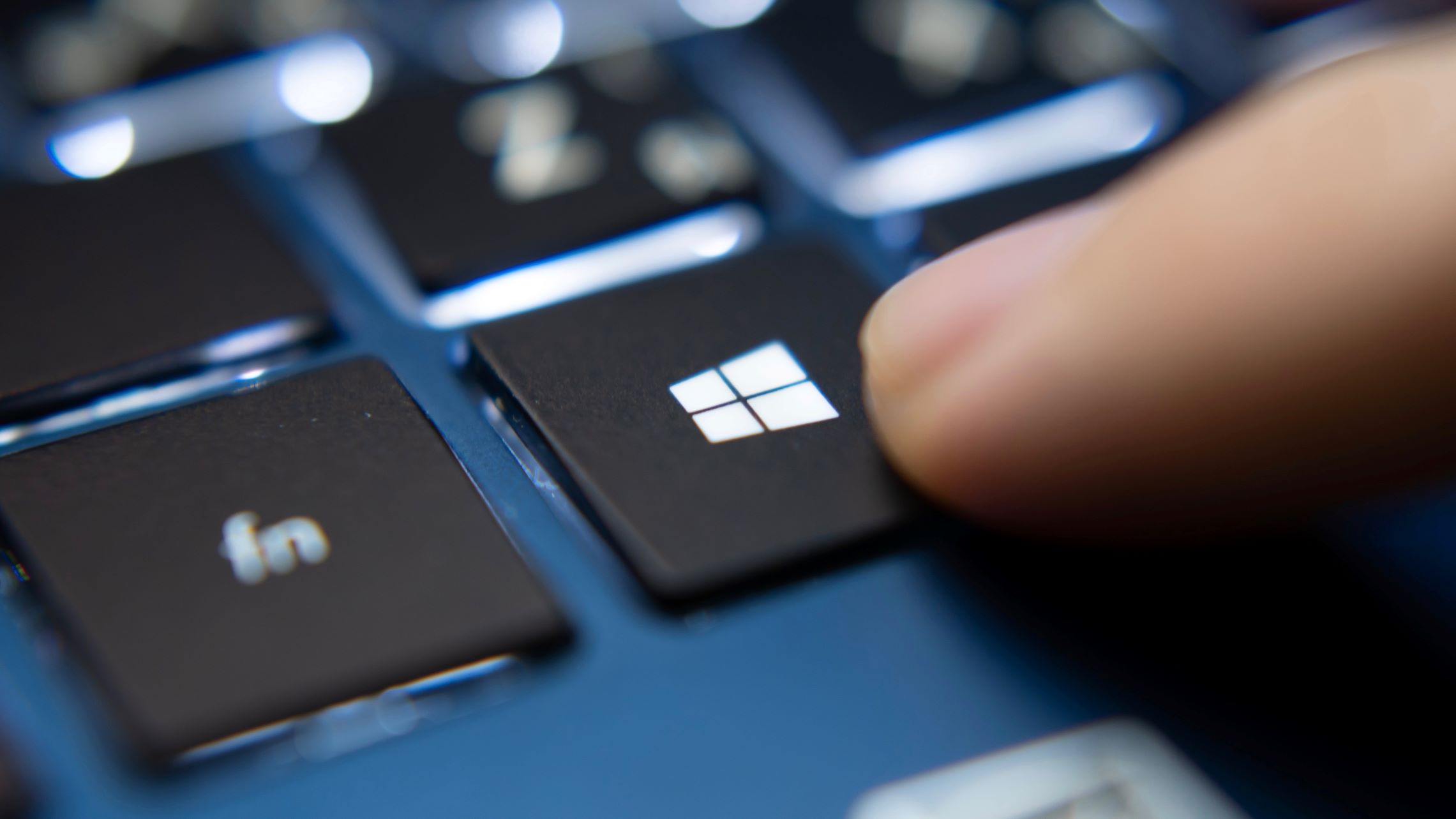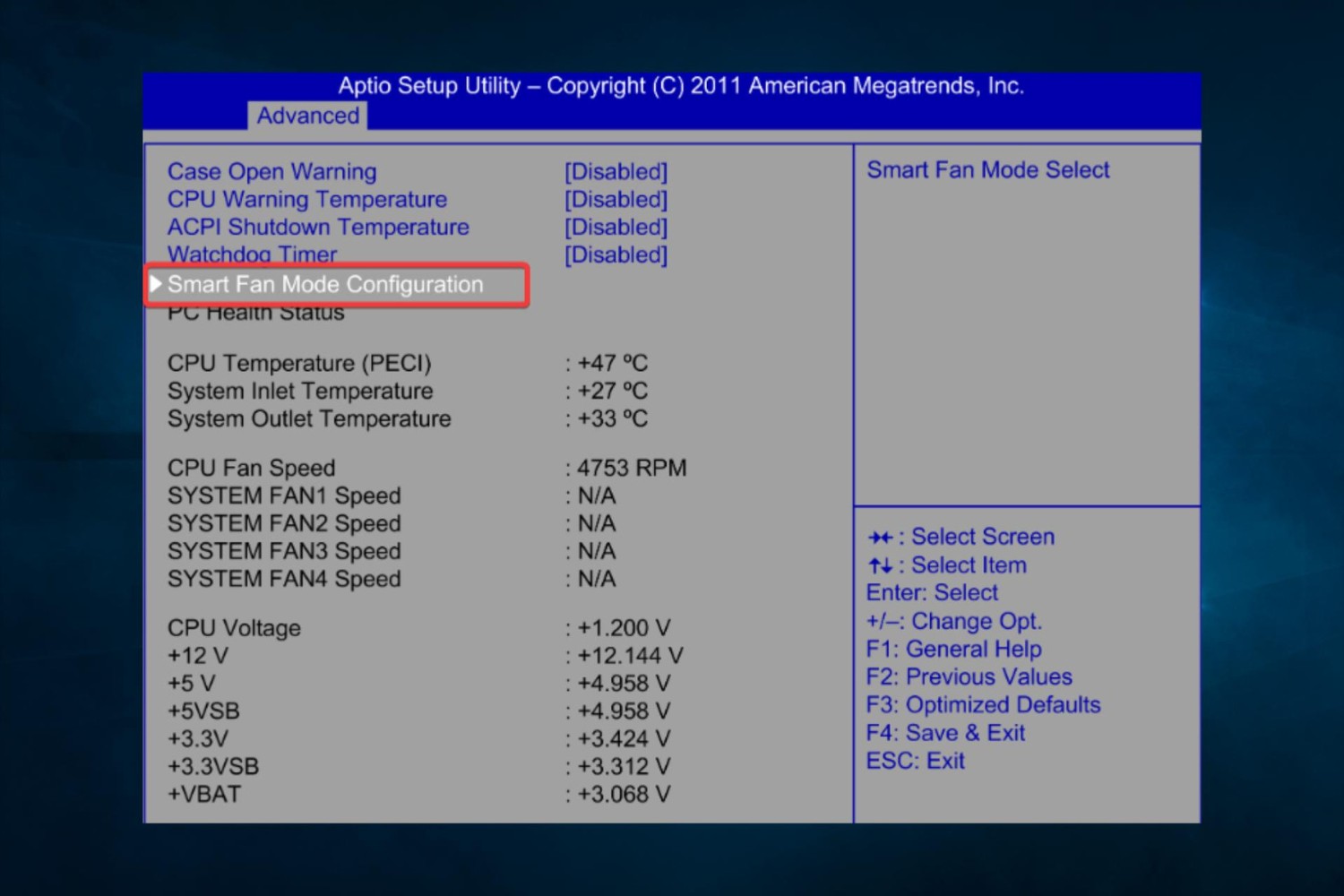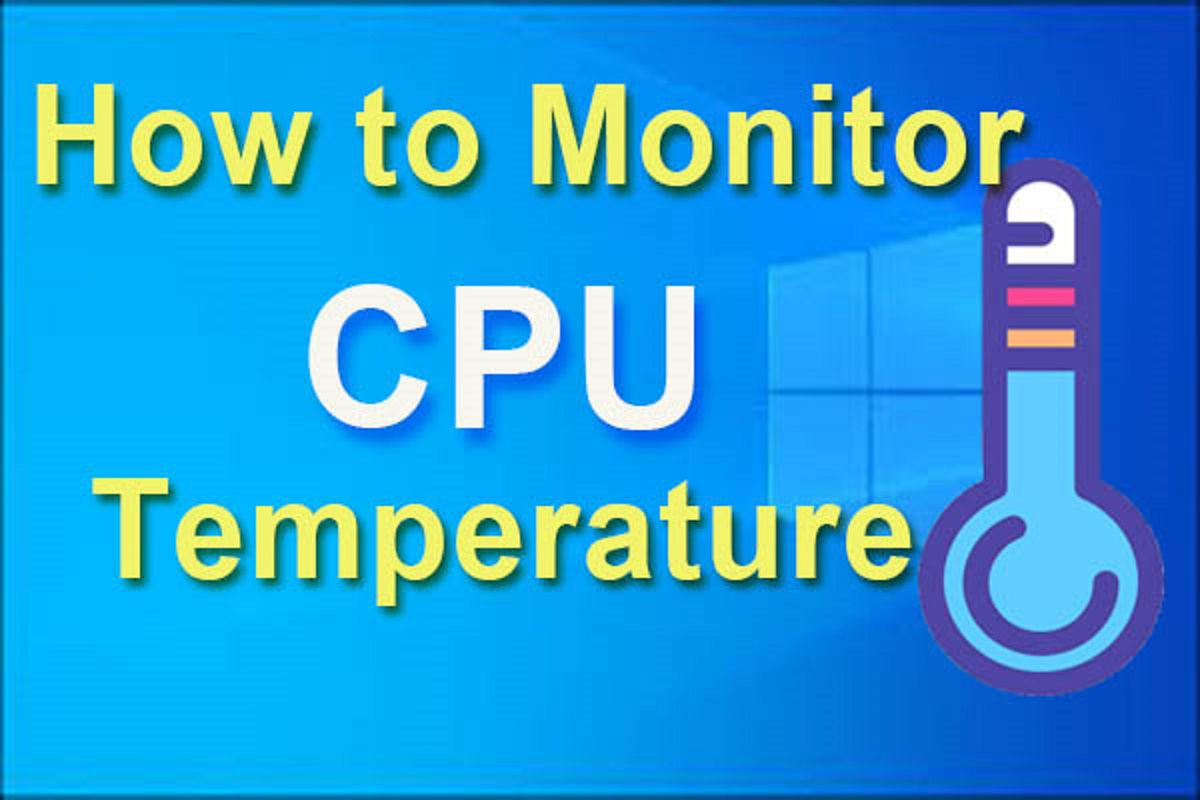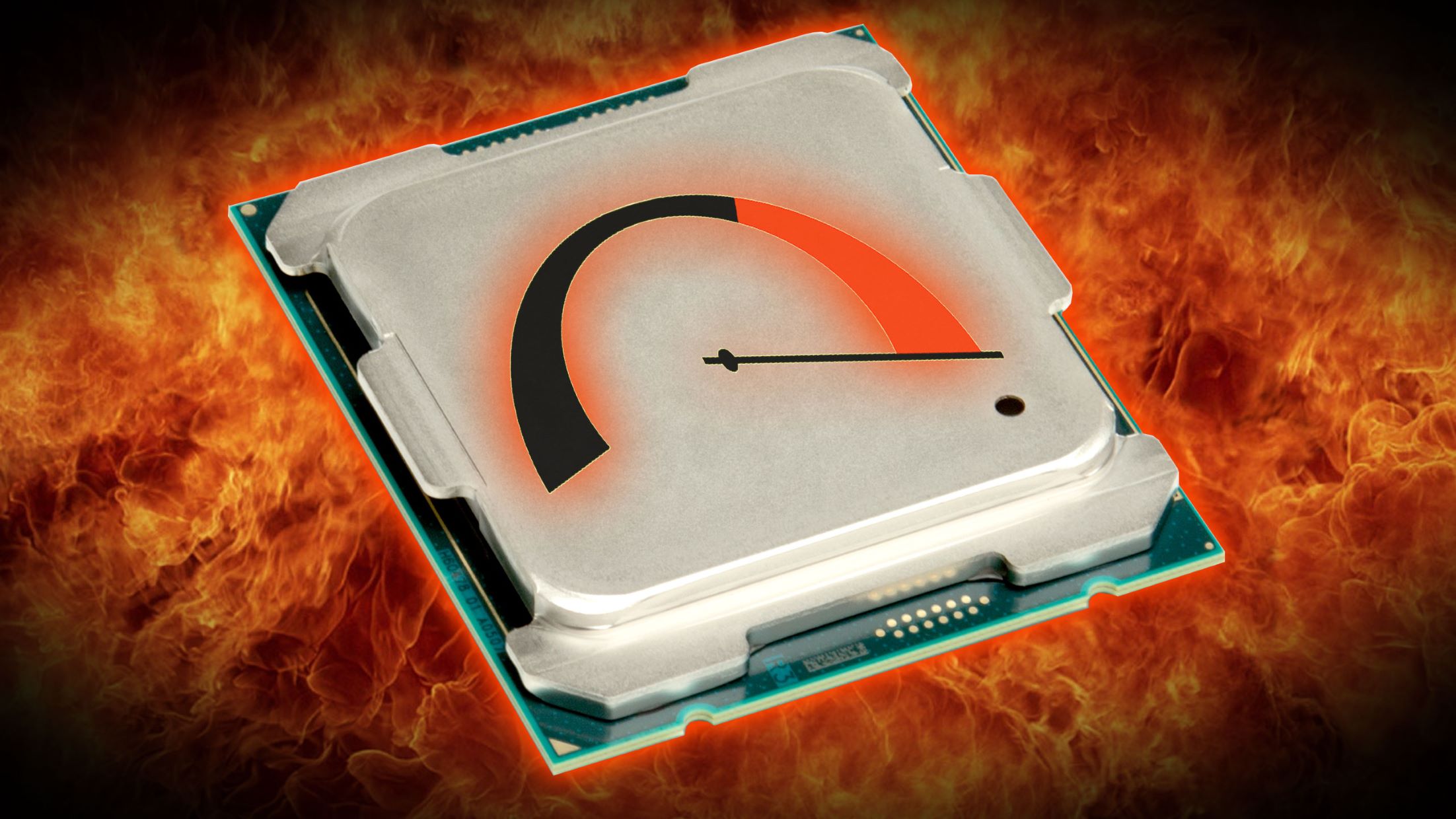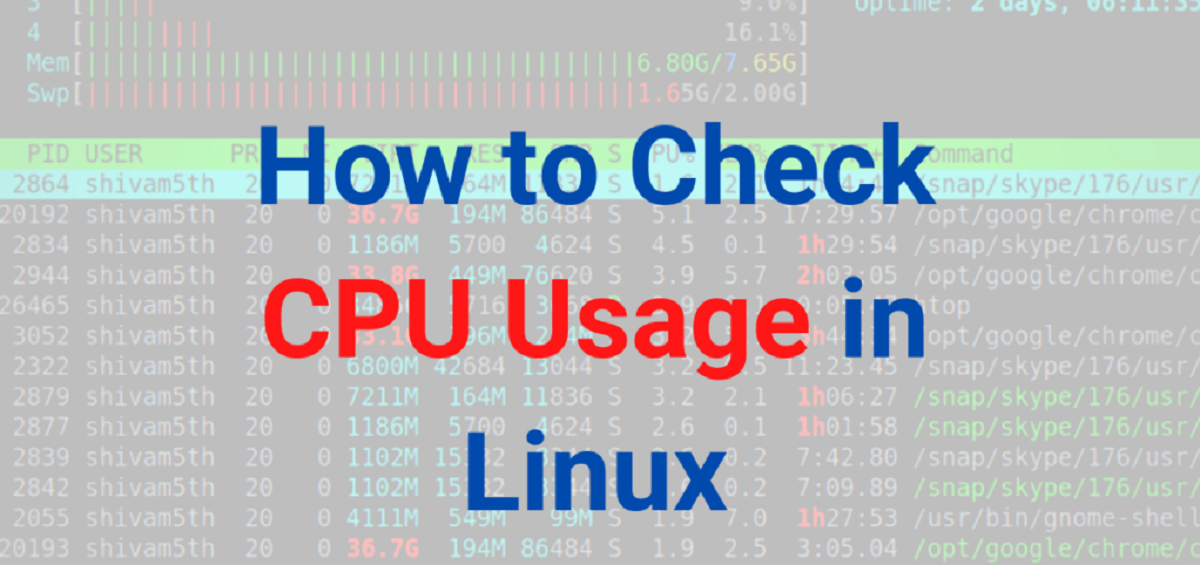Introduction
CPU usage is an important metric to monitor on your Windows 10 system as it can directly impact the performance and responsiveness of your computer. Understanding how to check CPU usage can help you identify any potential bottlenecks or issues that may be affecting your system’s performance.
There are various methods that you can use to check CPU usage in Windows 10. In this article, we will explore five different methods that can provide you with an accurate measure of CPU usage. Whether you prefer using the built-in Task Manager, Performance Monitor, Command Prompt, PowerShell, or Resource Monitor, there is a method that suits your needs and preferences.
Being able to see CPU usage can be especially helpful when troubleshooting system slowdowns, identifying resource-intensive processes, monitoring system performance during heavy workloads, or even just keeping an eye on your computer’s overall health.
In the following sections, we will walk you through each of the methods step-by-step, explaining how to access and interpret CPU usage data using various tools and utilities.
Method 1: Using Task Manager
The Task Manager is a built-in Windows utility that provides real-time information about the performance and resource usage of your computer. It is a powerful tool for monitoring CPU usage and managing processes.
To access the Task Manager, you can simply right-click on the taskbar and select “Task Manager” from the context menu. Alternatively, you can press the Ctrl + Shift + Esc keys on your keyboard to open it directly.
Once the Task Manager window is open, click on the “Processes” tab. Here, you will see a list of all running processes on your computer, sorted by the amount of CPU usage. The processes with the highest CPU usage will be displayed at the top.
You can also click on the “CPU” column header to sort the processes by CPU usage in descending or ascending order. This can help you identify any resource-intensive applications or background processes that may be causing high CPU usage.
Additionally, the Task Manager provides a real-time graph of your CPU usage at the bottom of the window. This graph allows you to visually monitor the CPU usage over time and identify any spikes or sustained high usage.
By using the Task Manager, you can quickly check the CPU usage of your Windows 10 system and take appropriate actions to optimize performance and address any issues.
Method 2: Using Performance Monitor
The Performance Monitor utility in Windows 10 allows you to monitor various system performance metrics, including CPU usage, in real-time. It provides a detailed and comprehensive view of your system’s performance over an extended period.
To access the Performance Monitor, you can follow these steps:
- Press the Windows key + R on your keyboard to open the Run dialog box.
- Type “perfmon” into the text field and press Enter or click OK.
Once the Performance Monitor opens, you will see a tree view on the left side, displaying various performance counters and categories. Expand the “Monitoring Tools” folder and click on “Performance Monitor.”
In the main window, you will see a graph showing the CPU usage over time. By default, it displays the “% Processor Time” counter, which represents the total CPU usage across all cores.
To add other counters or modify the graph, you can right-click on the graph and select “Add Counters” or “Properties.” This allows you to customize the view according to your preferences.
Performance Monitor also provides additional options such as creating data collector sets and setting up alerts for specific CPU usage thresholds. These advanced features can help you proactively monitor and manage CPU usage based on your specific requirements.
Using Performance Monitor gives you a more detailed and long-term perspective on CPU usage, making it an excellent tool for monitoring and analyzing your system’s performance over extended periods.
Method 3: Using Command Prompt
If you prefer using command-line tools, you can check CPU usage in Windows 10 using the Command Prompt. This method allows you to quickly retrieve CPU usage information without the need for a graphical user interface.
To check CPU usage using Command Prompt, follow these steps:
- Open the Command Prompt by pressing the Windows key + R on your keyboard to open the Run dialog box. Type “cmd” into the text field and press Enter or click OK.
- In the Command Prompt window, type the following command:
wmic cpu get loadpercentage - Press Enter to execute the command.
After running the command, you will see the current CPU usage as a percentage displayed in the Command Prompt window.
The “wmic cpu get loadpercentage” command provides a simple and straightforward way to check CPU usage using the Command Prompt. It is especially useful for scripting or automating tasks that involve monitoring CPU usage on multiple systems.
Keep in mind that the CPU usage displayed by this command represents the overall system CPU usage and not individual process-specific usage.
Using the Command Prompt to check CPU usage provides a lightweight and efficient method for quickly obtaining CPU usage information on your Windows 10 system.
Method 4: Using PowerShell
PowerShell is a powerful command-line scripting language and automation framework in Windows 10. It provides a wide range of capabilities, including the ability to check CPU usage.
To check CPU usage using PowerShell, follow these steps:
- Open PowerShell by searching for it in the Start menu or by pressing the Windows key + X and selecting “Windows PowerShell” or “Windows PowerShell (Admin).
- In the PowerShell window, type the following command:
Get-Counter '\Processor(_Total)\% Processor Time' - Press Enter to execute the command.
After running the command, you will see the current CPU usage displayed as a percentage in the PowerShell window.
The “Get-Counter” cmdlet in PowerShell allows you to retrieve performance counter data, including CPU usage. By specifying the “\Processor(_Total)\% Processor Time” counter, you can obtain the overall CPU usage across all cores.
PowerShell also provides additional features and flexibility for analyzing and manipulating CPU usage data. You can pipe the output into other cmdlets or export it to a file for further processing.
Using PowerShell to check CPU usage provides a robust and versatile approach, particularly for scripting, automation, and more advanced system monitoring scenarios.
Method 5: Using Resource Monitor
Resource Monitor is a built-in Windows tool that provides in-depth monitoring of system resources, including CPU usage. It offers a detailed view of processes, their CPU usage, and additional performance metrics.
To access Resource Monitor and check CPU usage, follow these steps:
- Open the Task Manager by right-clicking on the taskbar and selecting “Task Manager.” You can also press Ctrl + Shift + Esc on your keyboard.
- In the Task Manager window, click on the “Performance” tab.
- Click on the “Open Resource Monitor” link at the bottom of the window.
After clicking on the “Open Resource Monitor” link, the Resource Monitor window will open. Here, you can explore various tabs to monitor different aspects of system performance.
To check CPU usage specifically, click on the “CPU” tab. This tab displays a list of processes and their corresponding CPU usage. The processes with the highest CPU usage will be listed at the top.
You can also sort the processes by clicking on the “Average CPU” or “CPU” column header to view them in ascending or descending order. Additionally, Resource Monitor provides real-time graphs and a summary view of CPU usage at the bottom of the window.
Resource Monitor offers a comprehensive way to monitor and analyze CPU usage, providing insights into the individual processes that may be consuming excessive CPU resources. It can be particularly useful for troubleshooting performance issues or identifying resource-hungry applications.
By utilizing Resource Monitor, you can gain a detailed understanding of CPU usage and take appropriate actions to optimize system performance and resource allocation.
Conclusion
Being able to monitor and check CPU usage on your Windows 10 system is essential for troubleshooting performance issues, identifying resource-hungry processes, and optimizing system performance. In this article, we explored five different methods to check CPU usage, each with its own benefits and characteristics.
First, we discussed how to use the Task Manager, a built-in Windows utility that provides real-time information about CPU usage and process management. The Task Manager is easily accessible and offers a user-friendly interface for monitoring CPU usage.
We then explored the Performance Monitor, a more comprehensive tool that allows you to monitor CPU usage and other system performance metrics over an extended period. Performance Monitor provides detailed graphs and customizable counters to suit your specific monitoring needs.
Next, we introduced the Command Prompt method, where you can check CPU usage using a simple command. This lightweight approach is suitable for quick checks or scripting purposes.
Using PowerShell, a powerful command-line scripting language, allows you to check CPU usage in a versatile manner. PowerShell provides advanced features and flexibility for analyzing and manipulating CPU usage data.
Lastly, we discussed Resource Monitor, a built-in Windows tool that provides comprehensive monitoring of CPU usage and other system resources. Resource Monitor offers detailed insights into individual processes, helping you identify resource-hungry applications or troubleshoot performance issues.
In conclusion, with the variety of methods available, you can choose the one that best suits your needs and preferences for monitoring CPU usage on your Windows 10 system. By regularly checking CPU usage, you can optimize system performance, address resource-intensive processes, and ensure the smooth operation of your computer.









